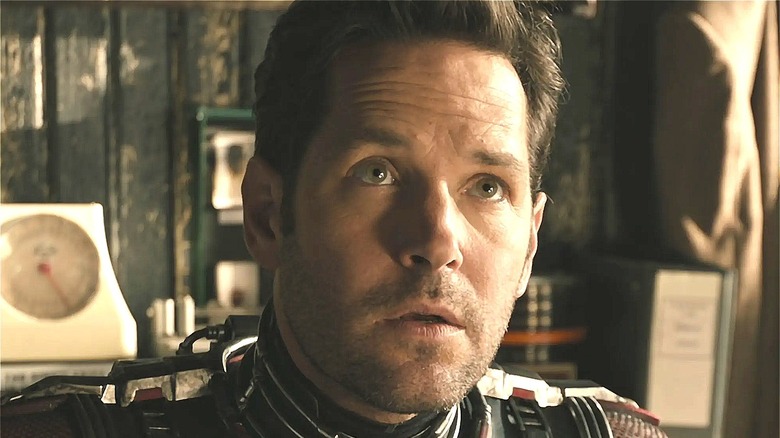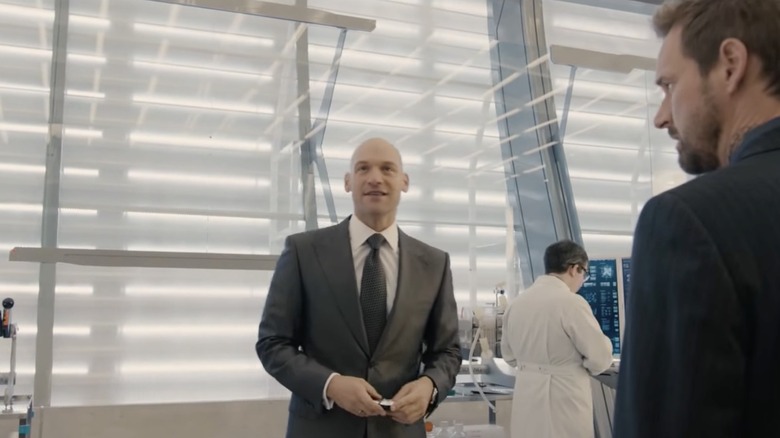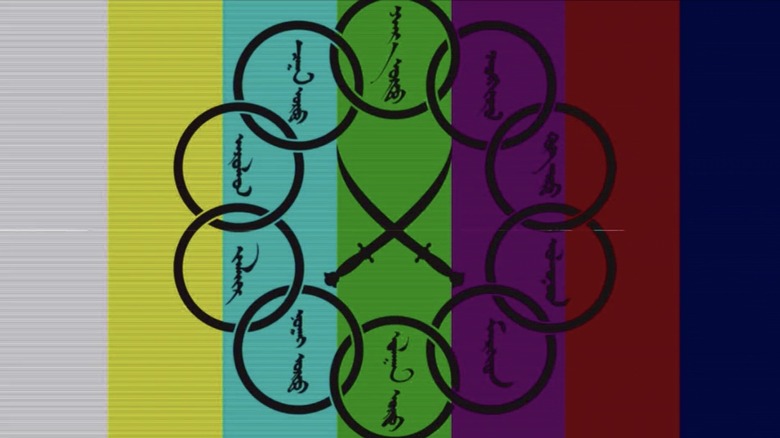The Ten Rings Easter Egg We Never Got To See In Ant-Man
The Marvel Cinematic Universe has never skimped on Easter eggs. Between the more commonly known references, such as the many cameos of Marvel maestro Stan Lee, to the more obscure — for instance, see all of the comic book tidbits hidden Episode 5 of the Disney+ series "Loki" — these Easter eggs are a big part of the fun. Finding them is just one of the things that makes the MCU so entertaining for fans who are in the know.
On occasion, they're not all discovered right away, either. Some are so subtle, in fact, that it can take years before they are discovered. Others may even end up on the cutting room floor, in the name of efficient storytelling. Those reference, then, may never see the light of day.
Of course, there's always DVD commentary. To make discs a more exciting purchase for fans, DVD releases often include commentary, deleted scenes, interviews, featurettes and other additional material. And every once in a while, that bonus footage reveals something very interesting. This was the case when the DVD version of "Ant-Man" was released in late 2015 with unaired scenes in which Scott (Paul Rudd) does some not-so-heroic things with the suit to help out his criminal pals, and a few bloopers that involved — well, dancing. "There's a healthy amount of dancing on the Blu-ray," director Peyton Reed told Entertainment Weely, ahead of the release.
Reed (with some help from Rudd) also revealed something else that's very interesting about a deleted scene, which ties into not only the MCU's origins, but also its increasingly complex future.
Someone's wearing a Ten Rings tattoo in an early deleted scene
At the start of "Ant-Man," Dr. Hank Pym (Michael Douglas) decides to resign from S.H.I.E.L.D. in 1989 after discovering the organization is trying to replicate his groundbreaking shrinking technology. When the story jumps forward to the present, Pym is invited back to the company he founded (and was then ousted from), Pym Technologies, to discover during an address to buyers in the Futures Lab that Darren Cross (Corey Stoll) is close to perfecting that very technology with a suit of his own.
However, one scene related to this plot point was cut from the film, which contains a very interesting visual motif.
The deleted scene in question shows some of the beneficial uses of the Pym particle technology, like shrinking large piles of landfill waste. It was ultimately cut, because as Reed noted in his commentary, "it wasn't crucial to our story." But Reed then points out a tattoo one of the buyers' necks, saying, "Is that a Ten Rings tattoo?" To which Rudd jokingly replies that it's not, claiming it's a logo from the 1996 Olympics in Atlanta, Georgia — which, of course, would also have interlocking rings.
The tattoo is only partially visible over the man's suit collar, so details are hard to make out, but it's likely an older version of the Ten Rings logo, which used interlocking circles and Mongolian script. Later, a new logo with Chinese lettering was used in "Shang-Chi and the Legend of the Ten Rings "(via Variety). Regardless, the presence of a Ten Rings-associated buyer at Pym Technologies makes sense, and fits well within the MCU lore more firmly established in "Shang-Chi." Cross is not above selling to terrorists. As the movie shows later, he's also involved with Hydra.
The significance of the Ten Rings reference
The Ten Rings — as an artifact, versus a terrorist group — have been part of Marvel lore since 1964's "Tales of Suspense" #50, which also introduced the Mandarin (via Collider).
In the MCU, the organization known as the Ten Rings have been around since the beginning: they are the ones who kidnapped Tony Stark in the first "Iron Man" movie, and then reappeared in "Iron Man 2" (briefly) and "Iron Man 3" (and the one-shot "All Hail the King"). The more Middle Eastern-based, conventionally equipped Ten Rings of the "Iron Man" films and the Asian-styled, more fantastical Ten Rings of "Shang-Chi" seem to be the same organization (as shown by a deleted scene from "Shang-Chi," which also came to light via the DVD release). The drastic contrast between the early MCU's depiction of the Ten Rings and the more recent version can be explained, per the plot of "Shang-Chi," that it's likely that the events of "Iron Man" occurred during the time when Xu Wenwu (Tony Leung) gave up leadership of the organization to be with his family.
You might wonder, knowing what we know now, if the subtle Easter egg in "Ant-Man" was meant to foreshadow the events of later movies. However, "Ant-Man" was released in 2015 as part of Marvel's Phase Two. "Shang-Chi," while it had been percolating for some time, was not officially greenlit until 2018 (via Variety), and it is part of the post-"Infinity War" era, aka Phase Four. So, while it's tempting to think this was a way of letting fans know what was in store, it was probably more designed to create a subtle sense of continuity in the Marvel world, connecting everything together.


